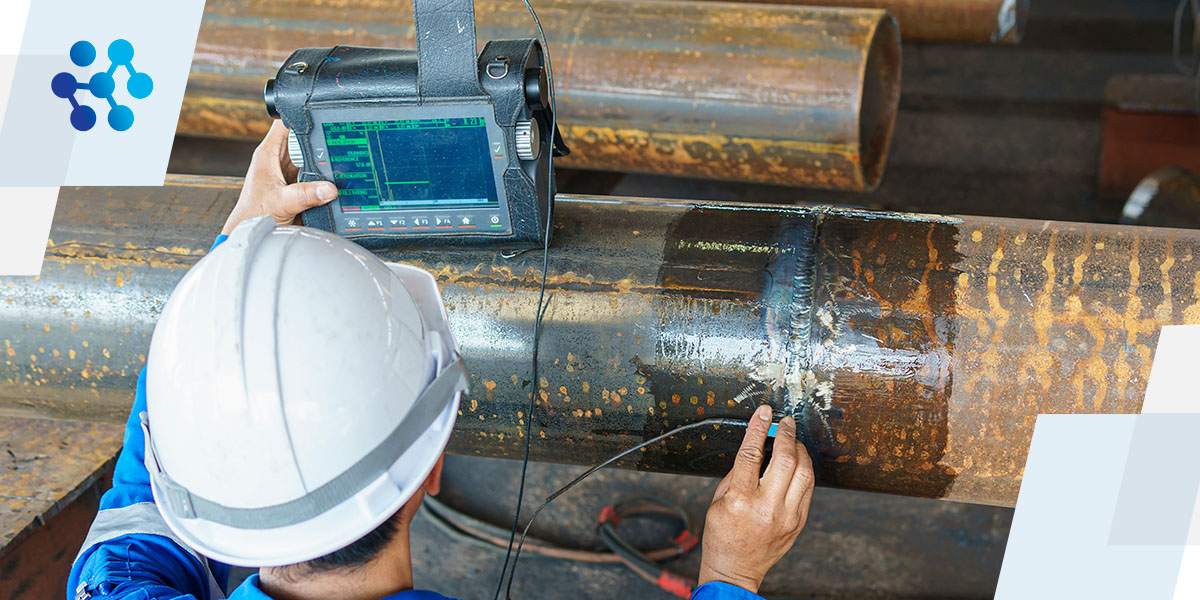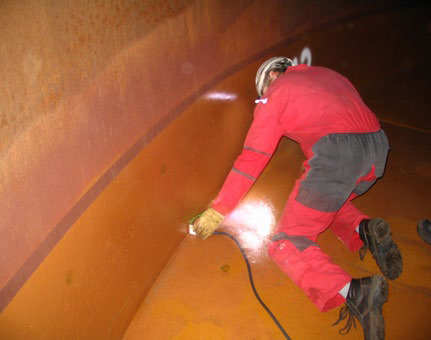Comprehensive Overview to Tank Welding Inspection for Security and High quality
Comprehensive Overview to Tank Welding Inspection for Security and High quality
Blog Article
The Crucial Duty of Storage Tank Welding Inspection in Ensuring Structural Stability and Safety Compliance in Industrial Applications
In the world of industrial applications, storage tank welding evaluation becomes an essential aspect in protecting structural stability and making sure compliance with safety and security guidelines. Using a combination of techniques such as visual evaluations and progressed testing techniques, these assessments offer to identify and reduce prospective defects before they rise right into substantial risks. The ramifications of these practices extend past mere governing adherence; they essentially effect operational efficiency and asset durability. Nonetheless, the intricacies surrounding the inspection procedure trigger a closer evaluation of its methodologies and outcomes, disclosing layers of significance that quality additional expedition.
Importance of Tank Welding Evaluation

Making sure compliance with industry requirements and laws is one more considerable aspect of storage tank welding examination. Regulative bodies mandate strict guidelines for the building and upkeep of tank, and detailed assessments aid companies stick to these demands. Non-compliance can cause extreme penalties, including penalties and shutdowns, better stressing the need for extensive evaluation protocols.
Additionally, tank welding examination plays a crucial function in keeping operational effectiveness. Regular evaluations can recognize possible concerns before they escalate, facilitating prompt repairs and reducing downtime. This aggressive method not only improves security however also contributes to set you back savings in the long run. In recap, the relevance of container welding assessment hinges on its capability to protect public health, shield the environment, and make sure conformity with governing structures.
Secret Examination Techniques
Efficient storage tank welding evaluation relies upon a selection of key techniques that ensure thorough examination of weld high quality and structural integrity. Amongst the most prevalent methods are visual inspection, ultrasonic testing, radiographic screening, and magnetic particle testing - Tank Welding Inspection. Each technique provides special advantages in examining various facets of the weld
Visual evaluation functions as the initial line of protection, enabling examiners to determine surface issues, abnormalities, or disparities in the weld bead. Ultrasonic screening utilizes high-frequency acoustic waves to discover inner defects, such as cracks or voids, giving a comprehensive evaluation of weld stability. This technique is particularly reliable in detecting concerns that may not show up on the surface area.
Radiographic testing utilizes X-rays or gamma rays to create pictures of the welds, exposing interior discontinuities and providing a permanent document for future recommendation. This technique is extremely efficient for important applications where the risk of failure should be reduced.
Finally, magnetic particle screening is utilized to determine surface area and near-surface defects in ferromagnetic materials. By using magnetic areas and fine iron particles, examiners can pinpoint discontinuities that might endanger the structural honesty of the container. Together, useful site these strategies create a durable framework for making certain high-quality welds in industrial applications.
Conformity With Safety Criteria

Normal assessments play a critical role in ensuring conformity by identifying prospective failures or variances from recommended requirements. Assessors are trained to review weld top quality, moved here validate material specs, and evaluate the total architectural integrity of containers. Their expertise is essential in ensuring that welding procedures meet the required security requirements.
Moreover, conformity with safety and security standards not just protects workers yet also safeguards the setting from potential risks such as leaks or devastating failures. Organizations that focus on safety and security compliance are better positioned to minimize threats, improve functional effectiveness, and cultivate a society of safety within their workforce. In summary, preserving rigorous compliance with safety requirements is vital for the successful procedure of storage tank welding tasks in industrial setups.
Benefits of Regular Inspections
Normal assessments are indispensable to preserving the structural stability and safety and security of bonded containers. These evaluations give an organized approach to determining possible flaws or weaknesses in the welds, making sure that any problems are addressed prior to they intensify into significant failings. By performing normal analyses, companies can identify corrosion, fatigue, and other kinds of deterioration that may jeopardize tank efficiency.
In addition, regular assessments add to conformity with sector official statement regulations and requirements. Sticking to these guidelines not just minimizes lawful threats yet also improves the organization's online reputation for safety and dependability. Routine evaluations foster an aggressive safety culture, motivating staff members to recognize and prioritize the importance of tools integrity.

Study and Real-World Applications
Instance research studies and real-world applications show the concrete effect of reliable storage tank welding assessment practices. Complying with the implementation of extensive welding inspection procedures, including visual and ultrasonic screening, the facility recognized crucial problems in weld joints that could have led to catastrophic failures.
In a similar way, a water treatment plant implemented a detailed examination program for its container welding procedures - Tank Welding Inspection. By incorporating non-destructive screening techniques, the plant was able to find very early indicators of deterioration and fatigue in weld joints. This prompt intervention prolonged the life-span of the storage tanks and made certain conformity with security laws, hence safeguarding public health
These case studies highlight the value of regular and methodical storage tank welding evaluations. By prioritizing these practices, markets can mitigate risks, enhance architectural stability, and guarantee compliance with safety and security standards, eventually resulting in improved functional efficiency and lowered responsibilities.

Verdict
Finally, container welding examination is an indispensable component of keeping structural integrity and safety and security in commercial applications. Utilizing numerous inspection strategies makes sure early detection of prospective defects, thus avoiding disastrous failings. Adherence to safety standards additionally enhances functional integrity and conformity with regulatory requirements. Eventually, regular evaluations not just shield public wellness and the atmosphere yet likewise add to the durability and effectiveness of vital properties, underscoring the essential duty of this practice in industrial operations.
Report this page